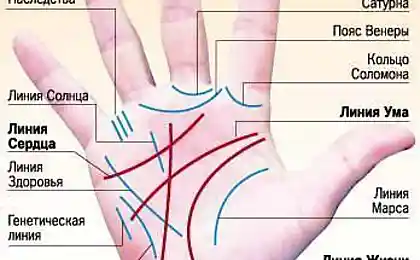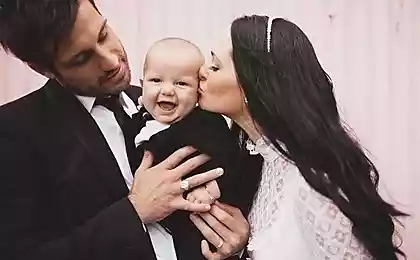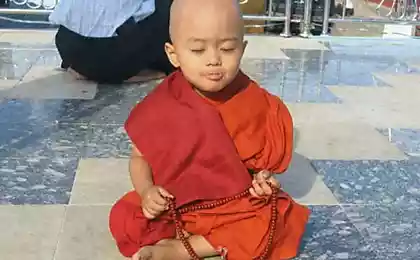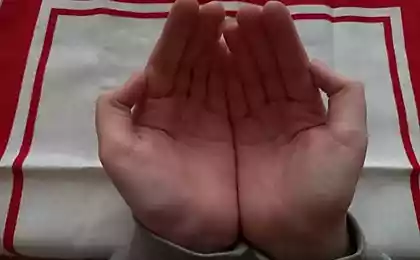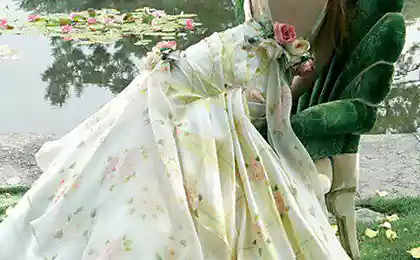590
Where is the line of Karma?
Several (namely 10) interesting scientific facts on the subject of the planet called Earth
via saturnic
1. Recognizes the official science and space separating the earth's atmosphere band called the Karma, and is located approximately 62 miles from the surface of our planet. Above: This picture taken at an oblique angle greatly over Africa, shows the Earth's atmosphere. (JPL / UCSD / JSC / NASA).

2. The largest source of electricity in the world is coal, thanks to which in 2001 produced 35% of electricity by 2025, this figure should reach 31%. By producing electricity teploeletrostantsii ranked first hydroelectric power station - the second and the third - the nuclear station. Upstairs: This night shot of the Earth was composed of more than 400 satellite images. (NASA).

3. On the surface of the Earth about 540 volcanoes known to mankind. Scientists do not know how much more is under the waters of the seas and oceans. Currently on the planet about 20 volcanoes erupt. Upstairs: Cleveland Volcano in Alaska erupts ash pillar of May 23, 2006. (NASA).
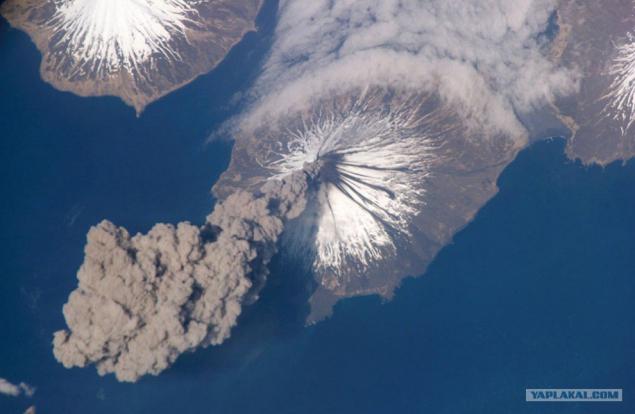
4. The average annual temperature in Antarctica has risen 1 degree over the past 50 years - but its glaciers are melting much faster than expected. A study conducted in February showed that the areas of melting glaciers were much more extensive than the scientists believe. Upstairs: a satellite image shows the ice in the Antarctic Peninsula 13 December 2008 on the left and 2 January 2009 on the right. (NASA).

5. On Earth, about 4000 known minerals. About 200 of them are of particular importance for man. Upstairs: for the shot quarry mine copper Morensi in south-eastern Arizona were used infrared rays. Bright pink areas indicate deposits of copper. (U.S. / Japan ASTER Science Team / NASA).

6. How do you evaluate some scientists, every 1000 years, the Earth faces a large asteroid or comet. Under the "big" they realize an asteroid impact with a force of 10 megatons bomb. Upstairs in this image from the satellite, presented in a distorted color, shows Spider Crater in Australia. Scientists believe that this - the consequences of a meteor that fell to earth 600-900 million years ago. (US / Japan ASTER Science Team / NASA).
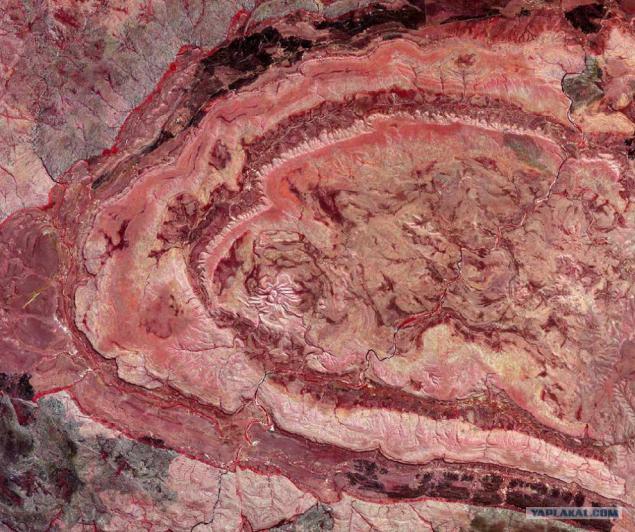
7. On Earth, about 2 million species of life - and another from 5 to 100 million, which is still unknown, so says the National Science Foundation. Above: NASA used satellite imagery to demonstrate the levels of vegetation on Earth. Gray areas indicate areas that are not managed to get any data. (NASA).
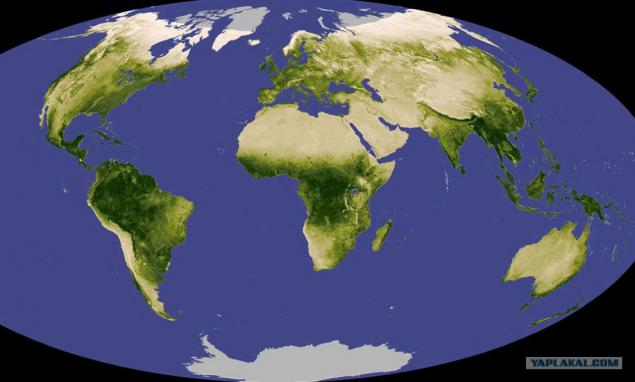
8. Scientists have long known that dust can cross the Atlantic Ocean from Africa to America - but it can also blow across the Pacific from Asia to America. Upstairs is the cyclone, which in April 2001 raised the dust storm in China, which later came to Maryland. (NASA)
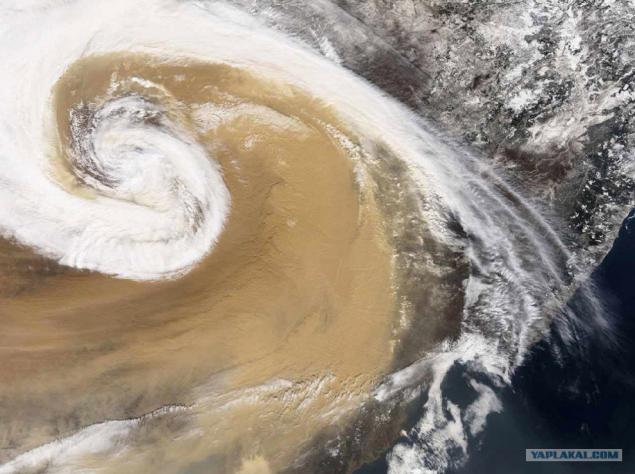
9. Climbing in the mountains is much harder than to descend to the ocean floor, if you look at it from gravity. Earth's gravity is much stronger in the mountains than on a flat surface, and ocean basins is even weaker. Upstairs: Mount Everest in the Himalayas. (NASA)

10. One third of the Earth's surface is desert. Upstairs: Rub 'al Khali - one of the largest sand deserts in the land area greater than France. It captures part of Oman, the United Arab Emirates and Yemen. (US / Japan ASTER Science Team / NASA)

Source:
via saturnic
1. Recognizes the official science and space separating the earth's atmosphere band called the Karma, and is located approximately 62 miles from the surface of our planet. Above: This picture taken at an oblique angle greatly over Africa, shows the Earth's atmosphere. (JPL / UCSD / JSC / NASA).

2. The largest source of electricity in the world is coal, thanks to which in 2001 produced 35% of electricity by 2025, this figure should reach 31%. By producing electricity teploeletrostantsii ranked first hydroelectric power station - the second and the third - the nuclear station. Upstairs: This night shot of the Earth was composed of more than 400 satellite images. (NASA).

3. On the surface of the Earth about 540 volcanoes known to mankind. Scientists do not know how much more is under the waters of the seas and oceans. Currently on the planet about 20 volcanoes erupt. Upstairs: Cleveland Volcano in Alaska erupts ash pillar of May 23, 2006. (NASA).

4. The average annual temperature in Antarctica has risen 1 degree over the past 50 years - but its glaciers are melting much faster than expected. A study conducted in February showed that the areas of melting glaciers were much more extensive than the scientists believe. Upstairs: a satellite image shows the ice in the Antarctic Peninsula 13 December 2008 on the left and 2 January 2009 on the right. (NASA).

5. On Earth, about 4000 known minerals. About 200 of them are of particular importance for man. Upstairs: for the shot quarry mine copper Morensi in south-eastern Arizona were used infrared rays. Bright pink areas indicate deposits of copper. (U.S. / Japan ASTER Science Team / NASA).

6. How do you evaluate some scientists, every 1000 years, the Earth faces a large asteroid or comet. Under the "big" they realize an asteroid impact with a force of 10 megatons bomb. Upstairs in this image from the satellite, presented in a distorted color, shows Spider Crater in Australia. Scientists believe that this - the consequences of a meteor that fell to earth 600-900 million years ago. (US / Japan ASTER Science Team / NASA).

7. On Earth, about 2 million species of life - and another from 5 to 100 million, which is still unknown, so says the National Science Foundation. Above: NASA used satellite imagery to demonstrate the levels of vegetation on Earth. Gray areas indicate areas that are not managed to get any data. (NASA).

8. Scientists have long known that dust can cross the Atlantic Ocean from Africa to America - but it can also blow across the Pacific from Asia to America. Upstairs is the cyclone, which in April 2001 raised the dust storm in China, which later came to Maryland. (NASA)

9. Climbing in the mountains is much harder than to descend to the ocean floor, if you look at it from gravity. Earth's gravity is much stronger in the mountains than on a flat surface, and ocean basins is even weaker. Upstairs: Mount Everest in the Himalayas. (NASA)

10. One third of the Earth's surface is desert. Upstairs: Rub 'al Khali - one of the largest sand deserts in the land area greater than France. It captures part of Oman, the United Arab Emirates and Yemen. (US / Japan ASTER Science Team / NASA)

Source:
